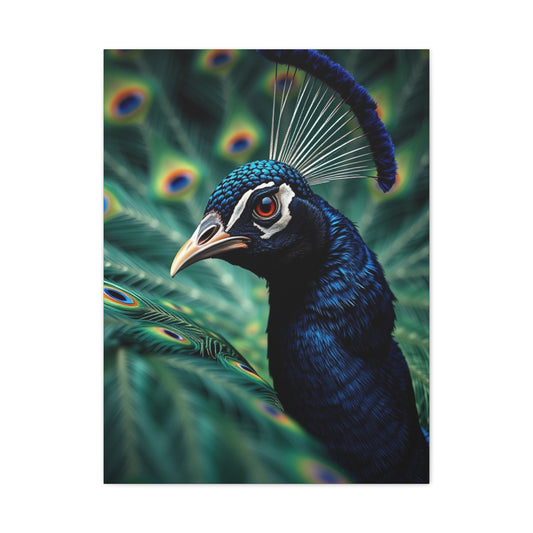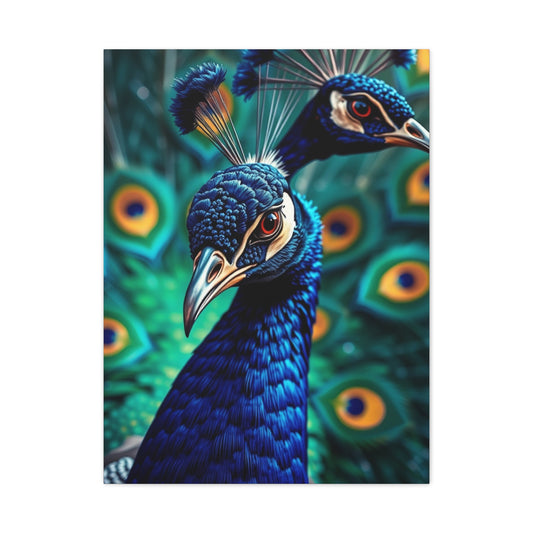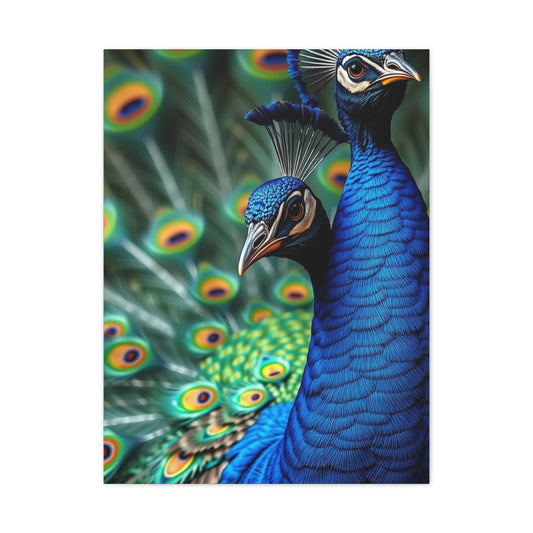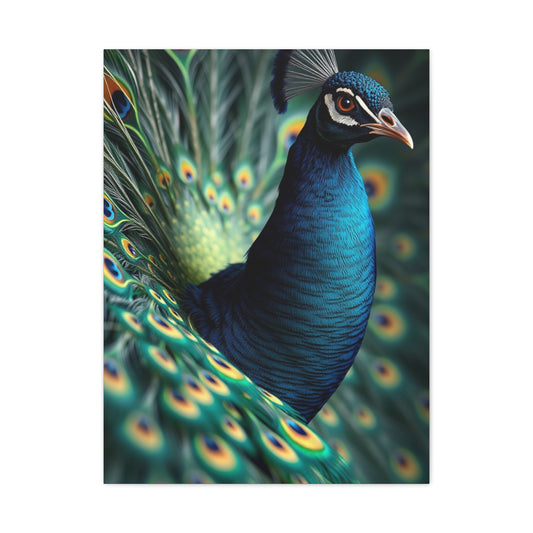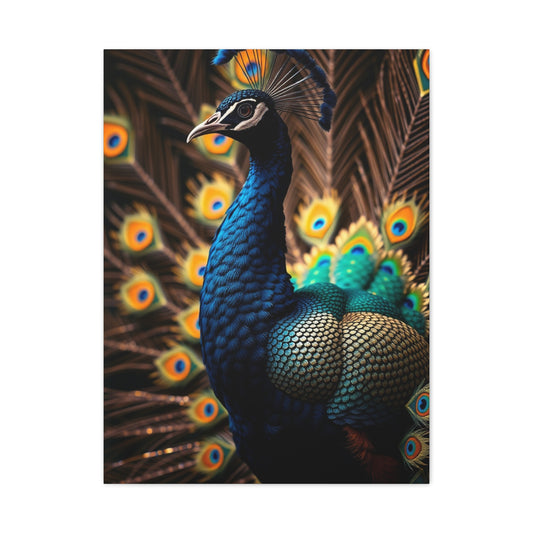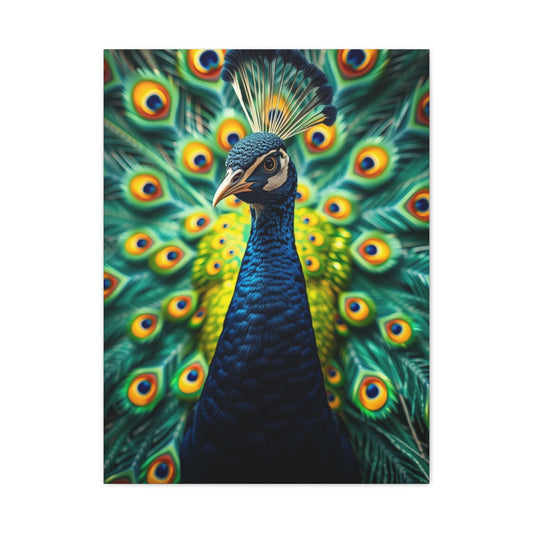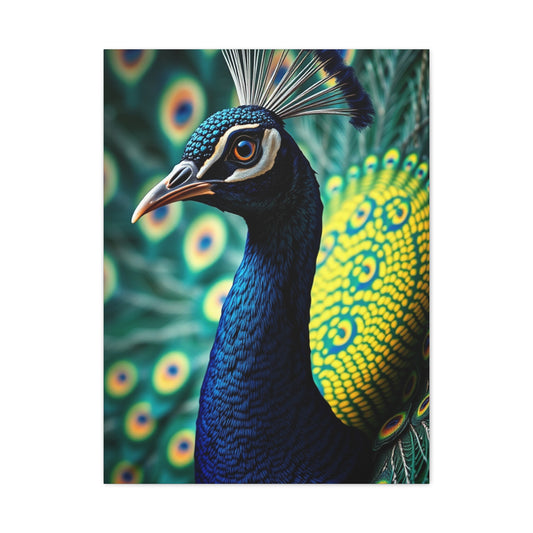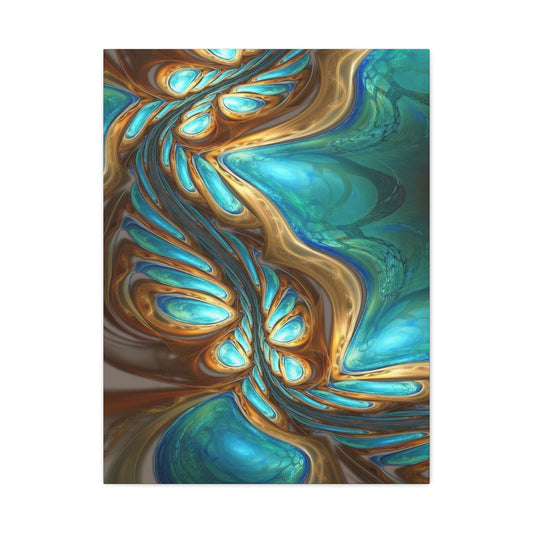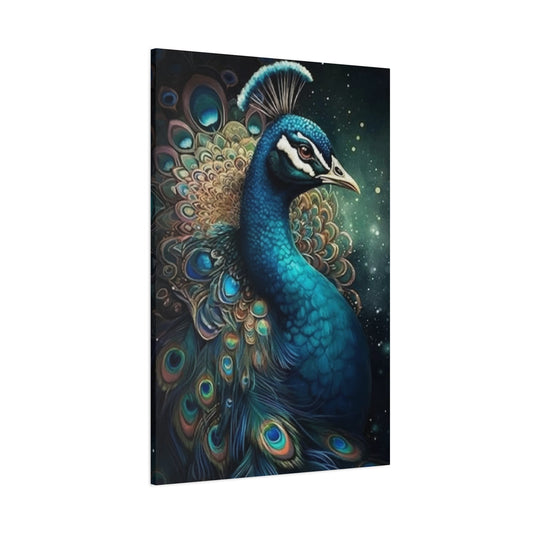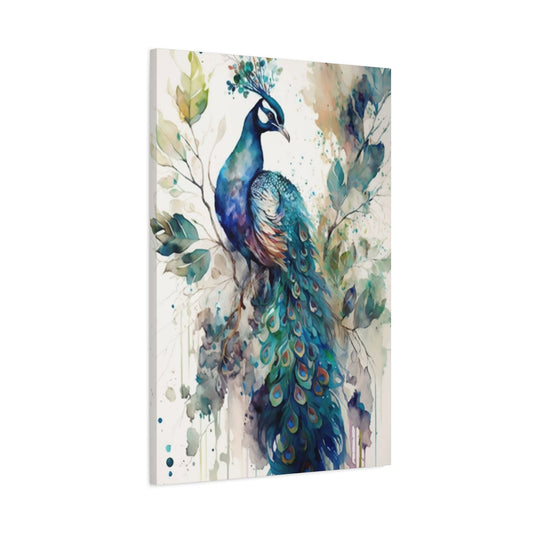Transform Your Walls with Elegant Peacock Wall Art Designs
Peacock decor offers an enchanting way to infuse your home with color, elegance, and a touch of exotic charm. The mesmerizing hues of teal, sapphire, and emerald found in peacock feathers, combined with their intricate eye-like patterns, can transform ordinary interiors into spaces of sophistication and vibrance. Integrating peacock motifs through wall art, textiles, or decorative accents allows you to craft a visually captivating environment that exudes luxury while remaining playful and inviting. These ideas highlight the versatility of peacock-inspired designs and provide inspiration for creating a home that feels both elegant and personalized. Beyond mere decoration, peacock-inspired elements introduce a sense of movement and storytelling into interiors, allowing rooms to breathe with life and visual intrigue.
Background
The fascination with peacocks as a decorative motif spans centuries and cultures, symbolizing beauty, renewal, and opulence. In ancient civilizations, peacock feathers were more than ornamental; they were believed to carry spiritual significance, representing immortality and awakening. In India, peacocks were associated with the goddess Saraswati, embodying wisdom and creativity, and their feathers were incorporated into ceremonial art and palace interiors. Similarly, in European history, peacock imagery adorned tapestries, frescoes, and furniture in royal courts, celebrated for its iridescent allure and sophisticated patterns. The natural shimmer of peacock feathers fascinated artisans, inspiring works that captured their intricate designs through painting, embroidery, and gilding.
Modern interior design embraces this fascination, translating the natural splendor of peacocks into wall art, fabrics, and accents that harmonize with contemporary or classic interiors. Designers today experiment with bold color palettes, combining peacock blues, deep teals, and vibrant greens with metallic gold or bronze accents to create layers of visual luxury. Peacock decor’s allure lies not only in its visual appeal but also in its ability to convey grandeur and refinement. Its presence elevates interiors, signaling a deliberate and artistic approach to home styling. The adaptability of peacock motifs allows them to blend seamlessly with minimalist, modern, eclectic, or even bohemian aesthetics, offering endless possibilities for personalization.
Key Concepts
At the heart of peacock-inspired decor is the interplay of color, pattern, and texture. The rich gradients of blues, greens, golds, and purples found in peacock feathers create dynamic visual interest, while the repetitive eye motifs lend a sense of movement and sophistication. Successful peacock decor balances these elements, whether through subtle accents or bold statements, allowing each room to feel cohesive yet intriguing. It is not necessary to saturate an entire room with peacock patterns; instead, careful placement ensures that each motif stands out while complementing surrounding decor.
The integration of wall art, textiles, and accessories ensures that the decor theme is immersive and adaptable. Wall art, in particular, acts as a central anchor in a room, drawing the eye and establishing a thematic foundation. Combining wall art with furniture, rugs, and textiles that echo similar hues or patterns creates harmony while maintaining a sense of layered complexity. Experimenting with scale is equally important; a single oversized canvas depicting a peacock in mid-strut can command attention in a living room, while smaller, framed feather arrangements can provide subtle elegance in hallways or bedrooms. Texture, too, plays a critical role. Combining glossy wall art with plush textiles, metallic accents, or natural wood elements introduces depth, allowing rooms to feel multidimensional and inviting.
Evolution of Wall Art Styles
The evolution of wall art is a fascinating journey that reflects human creativity, cultural shifts, technological advances, and changing aesthetic sensibilities over millennia. From the earliest forms of expression to contemporary installations, wall art has continually adapted to serve as a mirror of society, capturing ideals, beliefs, and emotions in ways that transcend time and space. In prehistoric times, cave paintings and engravings marked the first known attempts to communicate through visual imagery. Using pigments derived from minerals, charcoal, and natural dyes, early humans depicted hunting scenes, celestial bodies, and symbolic motifs on rock surfaces. These primitive artworks were not merely decorative; they held spiritual, educational, and social significance, serving as portals to understanding the natural world and human existence.
As civilizations flourished, wall art evolved into more structured and complex forms. Ancient Egypt introduced detailed frescoes and hieroglyphic inscriptions on temple walls, often illustrating religious narratives, royal triumphs, and mythological tales. The Greeks and Romans advanced techniques in mural painting and bas-reliefs, emphasizing proportion, perspective, and realism while celebrating gods, heroes, and historical events. The aesthetic sensibilities of these eras prioritized symmetry, balance, and idealized forms, setting the stage for centuries of artistic exploration and experimentation. The Byzantine and medieval periods introduced highly stylized iconography and elaborate murals in cathedrals, blending spiritual symbolism with intricate ornamentation. Gold leaf, vibrant pigments, and elaborate borders enhanced the visual richness of wall art, creating immersive experiences that captivated viewers and communicated profound cultural narratives.
The Renaissance marked a transformative era in the history of wall art. Artists like Michelangelo, Leonardo da Vinci, and Raphael pioneered techniques that combined scientific understanding of perspective, anatomy, and light with aesthetic ingenuity. Frescoes, large-scale murals, and ceiling paintings demonstrated a mastery of depth and dimensionality, turning walls into expansive canvases of human emotion and natural beauty. Wall art during this period became a testament to the intellectual and creative achievements of the time, blending artistry with philosophical and cultural reflection. Following the Renaissance, Baroque and Rococo styles introduced dynamic compositions, opulent detailing, and dramatic contrasts of light and shadow. Murals and canvases in palaces, theaters, and churches conveyed movement, theatricality, and exuberance, reflecting the social grandeur of European courts.
The 19th century brought Romanticism and Realism, emphasizing individual expression, nature, and ordinary life. Artists challenged traditional forms, portraying landscapes, everyday scenes, and emotional depth in ways that connected deeply with viewers. The Impressionist movement further revolutionized wall art by focusing on light, color, and fleeting moments, encouraging a more sensory and emotive experience of painted surfaces. Modernism in the 20th century expanded the definition of wall art, welcoming abstraction, surrealism, cubism, and expressionism. Walls became platforms for experimentation, where artists explored conceptual narratives, challenged conventional forms, and incorporated diverse materials. Movements like Abstract Expressionism, Pop Art, and Minimalism emphasized personal and societal commentary, creating immersive spaces where wall art could communicate on multiple levels simultaneously.
Contemporary wall art embraces unprecedented diversity. Installations now range from minimalist geometric prints and interactive digital panels to immersive, multisensory experiences that engage sight, sound, and touch. Urban and street art movements have redefined public perception of walls as communal canvases, blurring the lines between art, architecture, and social activism. Digital technology, projection mapping, and augmented reality allow wall art to evolve in real time, offering dynamic experiences that respond to viewers’ interactions. Despite these changes, the underlying purpose remains consistent: wall art transforms flat surfaces into portals of imagination, narrative, and visual delight. Its evolution demonstrates a continuous dialogue between culture, technology, and creativity, highlighting the timeless human desire to communicate, inspire, and beautify through walls.
Techniques Used in Wall Art
Creating wall art involves a diverse array of techniques, each offering unique textures, visual effects, and methods of engagement. Traditional painting remains a foundational approach, encompassing oil, acrylic, and watercolor mediums that allow for blending, depth, and subtle gradations of color. Oil paints offer richness, luminosity, and longevity, making them ideal for intricate murals or classic canvases. Acrylics provide versatility and quick drying time, accommodating layering, mixed media, and experimental textures. Watercolor techniques introduce transparency and fluidity, perfect for capturing delicate motifs or naturalistic themes. Brushwork, palette knife application, glazing, and impasto are methods within these mediums that dramatically affect the mood, texture, and depth of wall art.
Printmaking is another important technique, offering reproducibility while preserving the intricacy of design. Lithography, etching, screen printing, and woodcut methods allow artists to create multiple copies of their work, extending the reach of wall art beyond original, singular pieces. These techniques often incorporate detailed line work, shading, and layering of color, providing both aesthetic appeal and affordability for collectors and homeowners. Printmaking also allows for experimentation with scale, pattern repetition, and integration with other media, enriching the visual impact of walls.
Mixed media and collage techniques further expand the possibilities of wall art. By combining elements such as fabric, metal, wood, resin, and found objects, artists create textured, three-dimensional surfaces that invite tactile exploration. Decoupage, layering, and juxtaposition of materials add visual complexity and narrative depth, transforming ordinary walls into immersive artistic landscapes. Installation-based wall art, such as modular panels, sculptural arrangements, or interactive constructions, engages viewers differently than traditional two-dimensional works, often requiring movement or perspective shifts to be fully appreciated.
Digital art has become an increasingly prominent technique in contemporary interiors. Computer-generated imagery, digital painting, and photographic manipulation allow for precise detailing, infinite color possibilities, and customizable scales suitable for modern architectural spaces. Digital wall art can be printed on canvases, tiles, wallpapers, or even projected onto surfaces, offering unparalleled flexibility in design. Integration with augmented reality and smart home technology enables dynamic installations that change appearance, color, or pattern in response to environmental cues or user interaction, making wall art a living, evolving component of interior design.
Sculptural and relief techniques also contribute to the richness of wall art. Bas-relief, high-relief, and free-standing sculptural panels introduce depth and shadow, creating dramatic effects that interact with light and space. Techniques such as carving, embossing, and layering allow for tactile and visual engagement, transforming walls into multidimensional experiences. Additionally, experimental methods like encaustic painting, metallic leaf application, and textural plaster finishes provide unique finishes that captivate viewers and enhance the architectural character of spaces.
The choice of technique in wall art is influenced by factors such as room function, lighting conditions, interior style, and intended emotional impact. Soft, fluid watercolor or pastel murals may suit intimate spaces like bedrooms, while bold, sculptural installations complement public or high-traffic areas. Combining techniques—such as pairing mixed media with digital prints or layering sculptural elements over painted surfaces—enables homeowners and designers to create walls that are visually layered, interactive, and multidimensional. Ultimately, mastery of these techniques ensures that wall art not only complements interior design but also evokes a specific mood, tells a story, and enriches the human experience within the space.
Peacock-Themed Wall Art
Wall art offers a simple yet impactful avenue for introducing peacock elegance into any space. Framed peacock feathers arranged in a minimalist gallery wall can create a chic and refined statement, blending natural beauty with artistic presentation. Beyond traditional frames, consider using floating frames or shadow boxes, which highlight the feather’s texture and color while adding subtle dimensionality. Large canvas prints showcasing vivid peacock imagery serve as dramatic focal points, drawing attention and enriching living areas with color and movement. Abstract representations of peacock feathers can also add a contemporary twist, where brush strokes or geometric patterns suggest the motif without being literal.
For those seeking a more playful or temporary solution, wall decals featuring peacock motifs can enliven children’s rooms or creative spaces, adding whimsy without long-term commitment. Peel-and-stick decals in jewel tones can be arranged creatively to mimic the natural spread of a peacock’s tail, bringing motion and energy to otherwise plain walls. Additionally, mixed-media wall art, incorporating elements like metallic foil, acrylic overlays, or laser-cut wooden peacock shapes, can produce tactile experiences that invite closer inspection. The flexibility of wall art allows it to complement a variety of interior styles, from modern minimalist to eclectic maximalist, making it an essential component of peacock decor. It transforms flat surfaces into canvases of color, narrative, and personality, ensuring that each room feels intentional and visually compelling.
Textiles with Peacock Patterns
Textiles imbued with peacock-inspired designs bring warmth, texture, and vibrance into a room. Throw pillows adorned with peacock motifs can introduce subtle pops of color to sofas or beds, while rugs featuring intricate feather patterns serve as luxurious anchors for open floor plans, guiding attention and harmonizing the space. For larger areas, consider layering rugs with complementary colors or patterns, using the peacock palette as a unifying theme. Curtains with delicate peacock motifs filter light gracefully, adding a gentle decorative layer that enhances the overall ambiance.
Beyond conventional pillows and rugs, peacock-themed textiles can extend to bedding, upholstered chairs, and even lampshades. For example, a velvet armchair in deep teal with embroidered feather accents can serve as both a functional piece and a statement object. Table runners, placemats, and throws with subtle peacock motifs add continuity to dining and lounge areas, tying different elements together. By layering peacock textiles, homeowners create a visually rich and inviting environment that celebrates the motif without overwhelming the senses. Textiles provide opportunities to explore pattern repetition, color gradients, and tactile contrast, further enriching the sensory experience of the room.
In addition, using textiles as an extension of wall art can create cohesion. For instance, a peacock feather print pillow arranged beneath a framed feather wall art piece creates harmony between two dimensions of decor, uniting vertical and horizontal planes. Mixed textures, such as silk, velvet, or brocade, enhance the luxury factor, while woven patterns or jacquard designs introduce subtle depth. This combination of textiles and wall art ensures that each room is layered, tactile, and visually resonant, reflecting a sophisticated understanding of interior design principles.
Outdoor Peacock Decor
Peacock decor is not limited to indoor spaces; gardens, patios, terraces, and even balconies can benefit immensely from these elegant and vibrant motifs. Outdoor environments offer a perfect canvas to showcase peacock-inspired colors, patterns, and forms, transforming functional spaces into enchanting retreats. Garden statues depicting peacocks create whimsical focal points, evoking a sense of grandeur and sophistication while adding visual interest to flower beds, pathways, or entryways. These statues, crafted from materials such as bronze, stone, or resin, can range from life-size, realistic figures to abstract or stylized interpretations, blending seamlessly with different landscaping styles.
Outdoor cushions, throws, and patio furniture upholstered with peacock patterns bring warmth, comfort, and a pop of color to seating areas. These textiles allow homeowners to create inviting spaces for relaxation or entertaining guests, with hues of teal, sapphire, emerald, and gold echoing the natural brilliance of peacock feathers. Incorporating patterned umbrellas, tablecloths, or placemats further ties the decor together, ensuring continuity in the color palette and theme.
Lighting is another key element in outdoor peacock decor. String lights in peacock-inspired colors, lanterns, or pendant lamps with intricate feather patterns enhance evening gatherings, creating a magical, festive, and atmospheric environment. Solar-powered or LED lights designed with peacock motifs can illuminate pathways, patios, or garden features, combining functionality with aesthetic appeal. Reflective surfaces such as water fountains, mirrors, or decorative planters in peacock shades amplify the vibrancy, casting shimmering reflections that evoke the iridescence of actual peacock feathers.
Incorporating planters and garden art with peacock designs adds another layer of charm. Ceramic, metal, or wooden planters painted in rich peacock colors can hold flowers, shrubs, or ornamental grasses, blending horticultural beauty with artistic expression. Outdoor wall art, such as murals, hanging sculptures, or trellises adorned with peacock patterns, can enhance vertical spaces and create focal points, turning blank walls or fences into visually stimulating backdrops.
For larger outdoor spaces, consider installing decorative arches, gazebos, or pergolas accented with peacock-inspired motifs or colors. Draping fabrics, lights, or hanging ornaments in these structures can create intimate corners for gatherings or quiet contemplation, elevating the entire outdoor experience. Even smaller areas, like balconies or terraces, can embrace the theme with colorful floor rugs, decorative screens, or compact sculptures that celebrate the elegance and exotic charm of peacocks.
Extending peacock-inspired decor to outdoor areas allows homeowners to achieve a seamless aesthetic flow between interior and exterior spaces. By repeating key colors, patterns, and textures, the design narrative becomes cohesive, and the home feels unified from room to garden. These outdoor enhancements not only beautify the environment but also create spaces that encourage leisure, social interaction, and a deeper appreciation for vibrant, sophisticated design. Every corner of the home, whether indoors or outdoors, becomes an opportunity to celebrate color, elegance, and creativity through the enchanting motif of the peacock.
DIY Peacock Decor Projects
For creative homeowners, do-it-yourself projects provide an exciting opportunity to infuse personal flair into peacock-inspired interiors. A wreath crafted from real or faux peacock feathers makes a welcoming and distinctive entryway statement, blending craftsmanship with natural beauty while immediately establishing the room’s theme. Extending this concept, DIY wall hangings that combine feathers with macramé, beads, or fabric can add height and texture to hallways, creating a visually dynamic focal point. Upcycling furniture with peacock-inspired colors and patterns transforms ordinary pieces into stunning statement items; for instance, a dresser painted in iridescent blues and greens, with subtle eye motifs on the drawers, can serve as both functional storage and artistic expression.
Custom artwork, whether painted, collaged, or mixed media, allows homeowners to explore imaginative interpretations of peacock motifs while ensuring the piece is unique. For instance, layering metallic paints on a canvas with textured feathers can create depth and shimmer, capturing the essence of a peacock’s tail. DIY projects also extend to smaller decorative elements such as hand-painted coasters, decorative trays, and candleholders, which incorporate motifs and colors in a subtle, cohesive manner. These projects not only offer a cost-effective approach but also result in personalized items that reflect artistic vision, attention to detail, and a love for vibrant, luxurious design. By integrating DIY wall art and decor into multiple rooms, homeowners can create a seamless and immersive aesthetic that reinforces the peacock theme while allowing for playful experimentation and creative growth.
In addition, DIY projects foster a stronger emotional connection to the home, as each piece carries personal effort and creativity. Children’s rooms, for instance, can benefit from interactive projects such as painted murals featuring peacocks or handmade feather mobiles. Office spaces or studios can utilize peacock-colored accent panels, handmade wall hangings, or painted desk organizers to inspire creativity and provide a visually stimulating environment. Seasonal adaptations—like incorporating metallic feathers for holiday decor or pastel peacock designs in spring—allow DIY enthusiasts to refresh interiors without extensive redesign. The versatility of DIY projects ensures that wall art and decorative pieces remain dynamic and adaptable, bridging function and aesthetics in innovative ways.
Importance and Benefits of Wall Art
Wall art holds transformative power in interior spaces, offering far more than simple decoration. It can define the mood of a room, create visual harmony, and provide a personal touch that reflects individuality, taste, and lifestyle. Carefully chosen wall art influences perception, making spaces feel larger, cozier, more energetic, or more serene, depending on scale, color, subject matter, and composition. For instance, abstract pieces in bold colors can energize living rooms, while muted, nature-inspired artwork promotes calm in bedrooms or meditation areas. Wall art not only shapes ambiance but also directs the eye, establishing focal points that create balance, rhythm, and visual storytelling within a space.
Beyond aesthetics, wall art has psychological and emotional benefits. Studies suggest that engaging with art can enhance mood, reduce stress, and stimulate creativity. Homes adorned with thoughtfully selected artwork can inspire mindfulness and reflection, allowing inhabitants to experience joy, calm, or inspiration depending on the piece. Textured wall art, such as layered mixed-media canvases or sculptural installations, introduces tactile engagement, adding a layer of sensory enrichment. The strategic placement of wall art can emphasize architectural features, such as accentuating a fireplace, highlighting a feature wall, or drawing attention to a loft or high ceiling, enhancing both form and function.
Wall art also serves as a medium for storytelling and cultural connection. Pieces that reflect heritage, travel experiences, or personal achievements imbue rooms with narrative and memory. Incorporating wall art with historical or symbolic significance allows homeowners to convey values, celebrate milestones, or create thematic cohesion throughout the home. Even small additions, such as framed photographs, prints, or hand-painted panels, contribute to an environment rich in meaning and emotional resonance. In luxury interiors, wall art can elevate perceived value, sophistication, and refinement, creating spaces that feel curated, intentional, and thoughtfully designed.
In modern interiors, wall art offers versatility in adapting to evolving tastes. Modular or interchangeable pieces allow homeowners to update colors, themes, or compositions seasonally, keeping interiors fresh without extensive renovation. Large-scale installations or gallery walls encourage creativity, providing opportunities to combine prints, paintings, and sculptures to reflect individuality while maintaining visual coherence. By integrating wall art with complementary textiles, lighting, and accessories, homeowners can create immersive spaces where color, pattern, and texture interact, enhancing comfort, style, and visual appeal.
Step-by-Step Guide to Choosing Wall Art
Selecting the perfect wall art for a space requires both intuition and strategic planning. Begin by assessing the wall and room dimensions. Oversized pieces can dominate small rooms, while tiny pieces may appear lost on large, expansive walls. Determine the function of the room and the emotional atmosphere you want to cultivate. Bedrooms may benefit from soothing, pastel-inspired artwork, while dining areas or creative studios can handle more vibrant or dynamic designs. Consider the color palette carefully—wall art should complement existing furnishings, textiles, flooring, and accessories, while offering contrast where needed to maintain visual interest.
Texture and medium are equally important. Canvas paintings, framed prints, and sculptural wall art each interact differently with light and spatial perception. For instance, a glossy metal wall sculpture reflects light and introduces depth, while matte paintings or fabric wall hangings can create a more subtle, cozy effect. Consider how the wall art’s material will harmonize with other design elements, such as metallic finishes, wooden accents, or soft textiles. The subject matter of wall art is also vital; nature-inspired motifs, geometric abstractions, cultural references, or personal photographs can imbue a space with narrative and emotional resonance. Choosing subjects that reflect your personality or tell a story ensures that the artwork is more than decorative—it becomes a statement of identity.
When curating multiple pieces, consider symmetry, alignment, and spacing. Gallery walls require careful measurement to ensure balance, while singular statement pieces can be positioned at eye level to create a focal point. Orientation—horizontal, vertical, or mixed—affects perception and flow, especially in open-plan interiors. Pay attention to architectural features like doors, windows, or built-in shelving, ensuring that wall art enhances rather than obstructs these elements. In addition, lighting plays a crucial role; spotlights, track lighting, or strategically placed lamps can enhance textures, highlight colors, and emphasize depth.
Visualization is essential before committing to wall art. Create digital mock-ups or mood boards to see how proposed pieces interact with furniture, textiles, and lighting. This helps identify color conflicts, scale issues, or potential clashes with other decor elements. Consider traffic flow, sightlines, and room function to ensure wall art complements rather than dominates the space. Layering different pieces or combining multiple mediums—such as canvas, framed prints, and small sculptural items—can produce a cohesive yet dynamic gallery effect, adding visual rhythm and narrative interest.
Finally, consider long-term adaptability. Modular wall art systems or interchangeable prints allow homeowners to refresh interiors without full redesigns, maintaining visual interest while accommodating evolving tastes. Seasonal rotations, special collections, or curated additions from travel or personal experiences can keep spaces engaging and relevant. By combining thoughtful planning, personal expression, and attention to color, scale, and medium, wall art becomes a powerful tool for transforming interiors into immersive, harmonious, and inspiring environments.
Considering Style and Theme
Matching wall art with the overarching style of the room is essential for creating a cohesive environment. Minimalist interiors benefit from clean, understated compositions, geometric abstractions, or monochromatic pieces, while eclectic or bohemian spaces allow for layered textures, mixed media, and culturally inspired designs. Classic or traditional interiors can be enhanced with framed landscapes, still lifes, or ornate patterns, whereas modern or contemporary spaces thrive on bold color contrasts, experimental media, and innovative installations. Thematic cohesion—whether inspired by nature, culture, or personal storytelling—enables wall art to resonate beyond aesthetics, conveying subtle narratives and emotional undertones. Incorporating complementary decor, textiles, or accessories reinforces the theme, allowing the wall art to become a natural extension of the space rather than an isolated element. Balancing thematic clarity with creative freedom ensures that wall art enhances both visual appeal and experiential depth.
Budgeting and Investment Considerations
Wall art represents not only an aesthetic choice but also an investment in quality and longevity. Determine a realistic budget that aligns with the size, medium, and uniqueness of the piece. Original artworks, limited edition prints, and high-quality materials typically command higher prices but offer long-term value, while mass-produced or digitally printed pieces provide flexibility for frequent updates or seasonal rotation. Consider framing, mounting, or preservation requirements, as these factors contribute to overall cost and durability. Investing in timeless pieces that align with your taste and spatial needs ensures that wall art remains relevant and admired for years, enhancing both personal satisfaction and the home’s ambiance. Budget planning also involves exploring multiple sources, including galleries, online platforms, local artists, and craft markets, allowing a balance between quality, uniqueness, and affordability.
Solutions for Display and Arrangement
Once wall art has been selected, attention turns to the display and arrangement to maximize visual impact. Hanging techniques, whether traditional nails, hooks, adhesive systems, or rails, should consider weight, wall type, and desired flexibility for future rearrangements. Grouping pieces in clusters or creating linear arrangements can establish rhythm and balance, while a singular statement commands focus and provides clarity. Integrating lighting solutions, such as spotlights, track lighting, or ambient fixtures, enhances texture, depth, and color fidelity, ensuring that wall art remains a central feature regardless of natural light variations. For spaces with multiple walls or open-plan layouts, consider flow and perspective, ensuring that wall art guides movement and complements furniture placement. Rotating or updating pieces seasonally can keep interiors fresh, offering opportunities to experiment with color, theme, or technique without permanent commitment. Creative solutions for display transform wall art from static decoration into a dynamic and evolving feature of the home.
Personalization and Creative Expression
Incorporating wall art provides a unique opportunity for personalization, allowing homeowners to reflect their identity, experiences, and passions. Commissioned pieces or custom prints capture specific memories, places, or motifs, infusing spaces with authenticity and meaning. DIY projects, mixed media experiments, or collaborations with local artists offer hands-on engagement and the satisfaction of creating something singular. Even selecting commercially available works can convey personality through thoughtful curation, juxtaposition, and pairing with complementary elements. Wall art thus becomes a canvas for storytelling, connecting aesthetic choices with emotional resonance, cultural influences, and personal journeys, ultimately transforming interiors into expressive and memorable environments.
Future Outlook
The landscape of wall art continues to evolve, reflecting broader cultural, technological, and aesthetic trends. Emerging innovations in materials, digital media, and interactive design are redefining what wall art can be, transforming static surfaces into immersive experiences that engage sight, touch, and even sound. Augmented reality and projection mapping allow homeowners to change the visual narrative of a space at will, creating dynamic environments that shift with mood, season, or occasion. Sustainability is also shaping the future of wall art, as eco-conscious materials, recycled components, and low-impact production methods gain prominence. Designers are exploring natural fibers, biodegradable paints, and repurposed materials, enabling wall art to offer both beauty and environmental responsibility. The integration of artificial intelligence and generative design further expands creative possibilities, producing unique, customized patterns, textures, and compositions that can adapt in real time to user preferences or spatial characteristics.
Social and cultural influences are driving a renewed appreciation for narrative and experiential qualities in wall art. Homeowners increasingly seek pieces that tell a story, evoke emotion, or connect to personal heritage, blending artistry with meaningful symbolism. Multi-sensory installations, including layered textures, subtle movement, and tactile elements, provide immersive experiences that transform interiors into galleries of interaction and reflection. As open-plan living and multifunctional spaces become more common, wall art is expected to serve as both visual anchors and functional dividers, harmonizing large areas while creating intimate zones. In urban environments, where space is limited, wall art is evolving to occupy vertical, modular, and flexible formats, optimizing impact without encroaching on living space.
Technological advances are also democratizing access to wall art. Online marketplaces, digital galleries, and print-on-demand platforms allow artists to reach global audiences, while homeowners can explore diverse styles and techniques without geographic constraints. Virtual consultations and augmented reality previews enable precise visualization of wall art in a room before purchase, minimizing trial and error and ensuring cohesive design outcomes. This accessibility encourages experimentation with bold colors, abstract compositions, and unconventional formats, fostering innovation in interior aesthetics.
Interdisciplinary collaboration is increasingly influencing the future of wall art. Artists are partnering with architects, interior designers, and technologists to create integrated installations that blur boundaries between art, architecture, and technology. These collaborations yield unique environments where wall art is not merely decorative but essential to the spatial narrative, guiding movement, influencing mood, and defining functional zones. Such integrative approaches elevate wall art from an ornamental element to a central feature of design strategy, making it indispensable in contemporary interiors.
In addition, wellness and therapeutic considerations are shaping wall art trends. Designers are exploring the psychological effects of color, pattern, and scale, creating compositions that reduce stress, enhance focus, and promote relaxation. Wall art can serve as a tool for mental and emotional well-being, with nature-inspired imagery, abstract forms, and interactive elements contributing to mindfulness and cognitive engagement. In healthcare facilities, workplaces, and homes, wall art is increasingly recognized as a vital contributor to environmental psychology, supporting both aesthetic pleasure and holistic wellness.
Customization and personal expression remain at the forefront of wall art’s future. Homeowners seek pieces that reflect their identities, memories, and aspirations, blending traditional techniques with contemporary innovation. Digital fabrication, 3D printing, and laser cutting allow for precise execution of highly personalized designs, while AI-assisted creation offers options for novel patterns, color harmonies, and adaptive compositions. These advancements enable wall art to evolve alongside changing tastes, trends, and lifestyles, ensuring long-term relevance and visual appeal.
Cultural preservation is also a growing factor in wall art innovation. Artists are revisiting traditional motifs, regional craftsmanship, and indigenous techniques, merging them with modern sensibilities to create pieces that honor heritage while appealing to contemporary aesthetics. This fusion ensures that wall art maintains cultural resonance, celebrates diversity, and educates viewers while contributing to the beauty and identity of living spaces.
Looking forward, the convergence of art, technology, sustainability, and personal narrative promises a future in which wall art is both versatile and essential. It will continue to serve as a medium of self-expression, cultural storytelling, and environmental dialogue, enriching interiors in ways that are visually stunning, emotionally resonant, and intellectually engaging. The evolution of wall art suggests a future where every wall can be transformed into a canvas of innovation, creativity, and beauty, bridging traditional artistry with forward-looking design practices.
Conclusion
Wall art is more than a decorative element; it is a powerful tool for transforming interiors, expressing personality, and creating immersive experiences. From vibrant peacock-inspired designs to minimalist abstractions, the careful selection and placement of wall art can define the mood, harmonize space, and introduce a narrative that resonates with inhabitants and visitors alike. The evolution of wall art, shaped by history, culture, and technology, demonstrates its enduring relevance and versatility, while contemporary innovations allow for personalization, interactivity, and sustainability. By thoughtfully integrating wall art into every aspect of home design—through textiles, accents, outdoor pieces, and DIY projects—spaces gain depth, sophistication, and vitality. As trends continue to advance, wall art remains a bridge between artistry, lifestyle, and well-being, offering limitless possibilities for creativity, expression, and aesthetic enrichment. Ultimately, embracing wall art allows homes to reflect individuality, celebrate culture, and transform everyday environments into elegant, inspiring sanctuaries.


